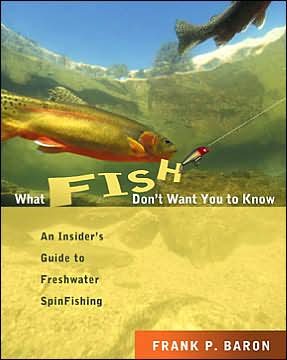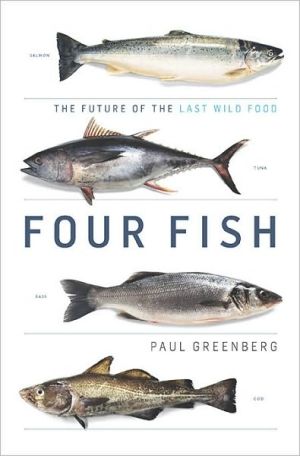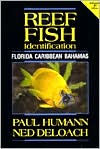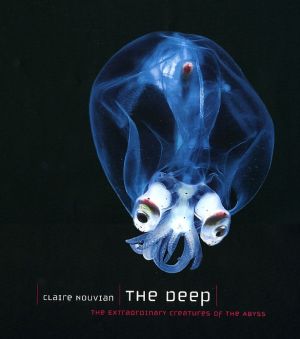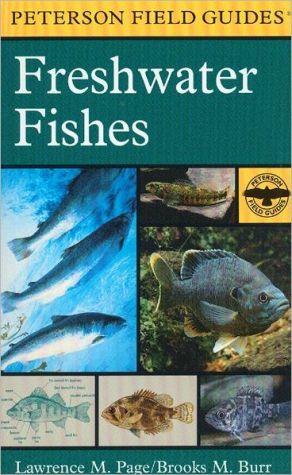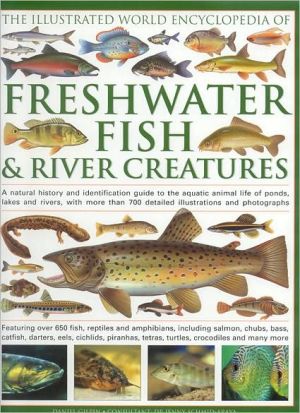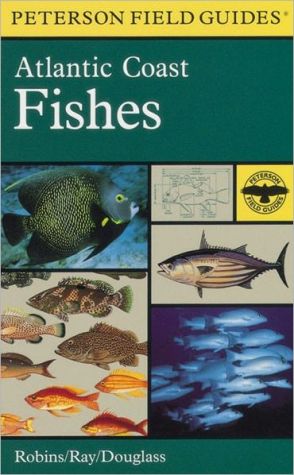What Fish Don't Want You to Know: The Insider's Guide to Freshwater Fishing
Expert, field-tested advice for anglers at every level\ This comprehensive, entertaining, and foolproof guide covers everything novice and avid anglers need to know to catch freshwater fish—from bass and trout to salmon and walleye—and reveals the two basic ways to catch ALL fish.\ With numerous photographs and illustrations, easy-to-follow instructions, and a liberal dose of good humor, the author shares his 40 years of angling expertise, including how to:\ \ Read the waters and the...
Search in google:
Don't Tell Whoppers—Catch 'Em!Anyone can toss a line into the water and get lucky once in a while, but if you want to catch more and bigger fish and have more fun doing it, you need to learn What Fish Don't Want You to Know. Whether you're new to fishing or an accomplished angler, this comprehensive and entertaining guide will improve your chances every time you cast a line into fresh water.With easy-to-follow instructions and a liberal dose of humor, this 97.3 percent foolproof manual reveals the secrets for catching any fish from bass and trout to salmon and walleye. Author Frank Baron plumbs his forty years of angling experience to show you the best ways to fish small streams, rivers, lakes, and ponds; change tactics with the seasons; and reveals the two basic methods for catching ALL fish. You'll also learn how to: Read water and how weather affects fish behavior Select the right baits and lures for particular fish and situations Recognize underwater habitats and adjust your techniques accordingly Master proper lure and bait presentation Know which gear is essential and which is desirable Turn a tough day into a great one with dozens of tricks and tipsPacked with wisdom, common sense, and amusing and instructive fish stories, What Fish Don't Want You to Know is the one fishing guide you don't want to let get away.Frank P. Baron is a veteran angler with a degree in journalism and forty years of fishing experience, both as a hobby and professionally.
What Fish Don't Want You to Know\ An Insider's Guide to Freshwater Fishing \ \ By FRANK P. BARON \ McGraw-Hill\ Copyright © 2004 Ragged Mountain Press\ All right reserved.\ ISBN: 978-0-07-150506-2 \ \ \ Chapter One\ Thinking Like a Fish \ One of the keys to catching fish is knowing how they think. "Thinking like a fish" has become something of a cliché, but it is essential if you want to improve your results. (By the way, it doesn't help to stare bug-eyed at the water while rhythmically gulping air. I've tried it.)\ You need both general and species-specific knowledge to truly get inside their slippery little heads.\ On the general level, fish aren't much different from you and me. Our most basic needs are food and shelter. When these are met, we look at a whole range of other things to occupy our time. Fish don't. Except at spawning time, fish are pretty much locked into the food and shelter thing.\ They will find and spend most of their time in safe, comfortable places near food. To catch them, you must find these safe, comfortable places and offer them food (or a reasonable facsimile).\ That's where the species-specific knowledge comes in. A sunfish's definition of "safe and comfortable" is vastly different from that of a 40-pound muskie. Even the ranking of safe and comfortable is on a sliding scale. The sunfish has many enemies and will choose safety over comfort if it can't have both. The muskie fears little and will take comfort every time.\ All species want food nearby.\ It's important to understand that all fish are in harmony with and finely attuned to their environments. They utilize their senses to the utmost, always aware of danger, always alert to the presence of prey. This near-constant state of high alert works against the plodding, clumsy, gravity-challenged angler. Luckily for us, though, fish aren't particularly smart, and they're great opportunists. That is the edge we have to exploit.\ I've caught thousands of fish on live and artificial worms or grubs. Chances are, few of those fish had ever seen either one before in their natural environments. They took the bait because it smelled good and looked helpless.\ * This "good to eat + can't hurt me" thinking is the undoing of many a fish.\ So, in a nutshell, "thinking like a fish" means assessing a body of water, determining where your fish is likely to be, and then giving it what it thinks it wants. Let's look at some typical bodies of water to see how this works.\ Small Streams\ I cut my angling teeth fishing small creeks and streams for trout. Water like this is the easiest to "read" (to figure out where the fish are). Most of what follows applies to native fish, those that are born in, and that stay in, a particular body of water. Migratory trout and salmon are different and I'll cover them on page 10 and elsewhere.\ Fish don't like light. They have no eyelids (can't blink) and no external ears (nowhere to hang sunglasses). They also have enemies, so they don't want to be seen. Consequently, fish avoid light. So look for them in the deeper, darker holes, brush-covered areas, under overhangs, and deep within undercut banks.\ Fish are lazy. Or, if you prefer, extremely "energy efficient." They want food to come to them rather than to have to actually hunt for it. Aquatic insects, such as nymphs and larva, and unlucky terrestrials, like ants and grasshoppers, form the basis of their diet. As the insects hatch or the luckless ants lose their grip, the current tumbles them downstream. The biggest, most aggressive, "boss" fish will stake out the best holes in the stream, those that provide safety and proximity to a good current. Like a pizza place, the current offers free home delivery.\ Fish seek shadowed areas to avoid being seen by predators. The shade provided by overhead cover also cools the water.\ Being both lazy and cautious, they won't spend a lot of time in mid-current, but will dart out from cover to snap up a morsel and then retreat. In deep, dark holes, the depth at the mid-to-lower part of the pool provides a respite from the current, and the fish can pick and choose from the smorgasbord that comes their way.\ Fish are agoraphobic (they have a fear of open spaces). You would be too if ospreys, kingfishers, gulls, and eagles had 20-foot wingspans and enjoyed eating people.\ Therefore, fish want a "roof" over their heads. The roof usually takes three forms: cover (as in tree roots, undercut banks, overhanging brush, or even surface foam), depth, and turbidity. Depth offers safety if predators can't see to bottom where the fish is hunkered down. And dingy water allows fish to go about their business with less likelihood of being seen.\ You will rarely, if ever, see a "boss" native fish before you've hooked it. It will be tucked away under the bank or under another obstruction if available. If you can see the bottom of a pool, the "ceiling" is too low for a good fish to feel comfortable. It will find a safer place.\ In moving water such as streams and rivers, the current delivers food to fish.\ You'll come across water that seems to fit the bill, deep holes with brush or overhangs, and catch nothing but chubs or suckers. What's the deal?\ The water is probably moving too slowly, with either not enough oxygen or uncomfortably high temperatures and a poor delivery system. A nearby current flow is essential.\ * Exception: Occasionally, usually at night or after a rain, some big fish will visit these holes to put a dent in the chub and sucker population.\ OK, you're fishing a stream and you've found a likely looking hole that satisfies all the criteria. Now what?\ Well, if you're a member of PETA (People for the Ethical Treatment of Animals), you take a picture and go home.\ But you happen to be an angler, and you want a crack at that 16-inch brown you just know is in there somewhere.\ Before we get too far along here, let's take a peek at what you're wearing and what tackle you're using. (I'll go into greater depth on these subjects in chapters 3 and 6.)\ You have hip waders on because it will be necessary to cross the stream several times during the course of the day. Some holes can only be properly approached from one side or the other. And you'll usually want to face the sun to keep your shadow behind you.\ You have a vest on with a minimum of 97 pockets, all of which are bulging with stuff you will mostly never need but that you might use one day. (Besides, aching shoulders are a small price to pay for a good trout.)\ You are wearing a hat and polarized sunglasses to cut the glare (facing the sun, remember?). These items are necessary even on cloudy days. I only ditch them during a downpour.\ You are using tackle suited to the conditions and your quarry. Your rod is 5 to 6 ½ feet long because it's a brushy creek and maneuvering a longer rod is a pain. It's a light-action rod, and your reel is spooled with 4-or 6-pound monofilament because the largest fish you are likely to encounter is 20 to 24 inchesand weighs 3 or 4 pounds. The average is 8 to 14 inches. You're using a small, #10 or #12 short-shanked, wide-gapped hook(smallerthana dime) tied directly to your line. (See the primer in the appendix for hook sizes.)\ Fish take advantage of any available cover to avoid enemies and to ambush prey. Most streams you fish will have these features: areas of strong current, riffles and rapids, runs, deep pools, rocks and boulders, and various forms of overhanging cover like bushes, fallen trees, and undercut banks.\ You've hooked a small worm, or a piece of a large one, once through the middle. You've attached a tiny, BB shot sinker about 10 inches above your hook because the current is medium-fast.\ You're ready. And you're lookin' good. Maybe someone should take your picture.\ You take careful aim and drop your offering dead center in the middle of a nice pool with a barely perceptible plop. You prepare to do battle.\ Wrong! Error! Stop the tape!\ Remember the part about fish being finely attuned to their environment? Aha! I thought not. You just remembered the part about them being not too bright.\ In the natural scheme of things, a fish doesn't often see worms dropping through its "ceiling." Their food usually drifts in gently through the "front door," via the current.\ OK, roll tape.\ You take careful aim and drop your offering above your pool, letting the current tumble your bait naturally to where Mr. 16-inch Brown is waiting, jaws agape. Tap-tap-tap, hook-set, and the battle is on!\ * Exception: Sometimes, especially on bright, sunny days when the water is low and clear, a fish won't come out from cover to take even the most artfully presented bait tumbling a foot or two away. If a portion of the current leads directly into the cover, let your offering go there. Hopefully, the fish will take it before you get snagged. If the fish is in an eddy near shore, try tossing your bait lightly onto the bank, and then slowly drag it until it slides into the water like an adventurous but unlucky wanderer.\ NOT-SO-TALL-TALE\ First Trout\ When I caught my first trout (which might have been a chub or a dace—doesn't really matter, it was bright and shiny) I was probably about 5 or 6 years old. I'd memorized the description of the tap-tap feeling that meant I had a bite. I knew, in theory, how to set the hook. I was supposed to lift up the rod, hard.\ I was using a push-button spincasting outfit like many youngsters start with even today. We were fishing in an open section of a small stream bordered by fields on both sides. I felt the tap-tap. I reared back on the rod. Somewhere in the process I must have put my thumb on the button when I set the hook because I recall glimpsing a small, silvery object arcing overhead and rocketing behind me to land about 25 yards away in the field. The grass and weeds in the field were as tall as I was. I remember the sunlight glinting off my line as it disappeared far into the distance. I was very excited, but felt very small.\ I set my rod down and, clutching the line in my hands, traced it back into the field, hollering for Dad all the while. Together we admired the 5-inch beauty we found at the end of the line. I don't remember which of us rushed back to the creek to let it go before it died. I only remember that we did let it go. I don't recall if I caught another fish that day or not, but I'll forever remember following that shimmering line through the field.\ Rivers\ Now it gets a little trickier. The same basic rules apply to bigger moving water; fish still want to feel safe and be near food.\ But they will have more choices of where to be in a larger river. Aside from the "usual" places already discussed, they may take shelter behind rocks or boulders, which provide current breaks. They will hold there sometimes, keeping their eyes focused on the sides so they can snatch passing goodies.\ If you're after migratory fish, like steelhead, some browns and brookies, or salmon, you'll find them using the water as a highway to get where they are going (spawning beds) rather than as a home. They will rest in deeper holes, much to the chagrin of the natives, but won't shy away from rapids, riffles, or shallower water. (If you only got to have sex once a year, you wouldn't be bothered by trifles like food or shelter either.) These fish are also usually much larger than natives and not as worried about airborne predators.\ So, unlike natives, migratory fish can be, and often are, hooked in water where they can be seen. You can often try to catch a specific fish, somewhat like a fly fisherman casting to where an individual fish is repeatedly rising.\ I still focus on deeper holes and runs when fishing for migratory fish because I much prefer the mystery of not knowing exactly what it is that takes my offering.\ You're going to look a little different when fishing these waters. You may have replaced your hip waders with chest waders so that you can negotiate deeper water. You're probably wearing the same vest, hat, and sunglasses, though.\ Your rod may be anywhere from 7 to 13 feet long. The longer rods, 9-feet-plus, allow the use of light lines (4-to 8-pound test), even though your target fish may be over 20 pounds. The extra length absorbs impact, saves wear and tear on the arms, and lets you present live or artificial bait more naturally. You can keep the tip of the rod more directly above your bait, reducing line drag and making it easier to detect pick-ups.\ The shorter, 7-to 9-foot rods are better for casting and retrieving hardware (spinners, plugs, and so on) and can be spooled with 8-pound or heavier line. You still present your offering, whether live or artificial, upstream from the fish, letting the current help present it.\ * Exception (sort of): One tactic that can work quite well, particularly with migratory fish, uses the current in a different way. Position yourself upstream of the hole and drop a wobbling-type plug into the current, holding it in place and letting the current supply the action (this is known as "back-dropping"). Every 20 seconds or so, let a little line out to ease the plug deeper into the hole. Many fish, especially big ones, find the implacable, unhurried wobbling absolutely maddening and will strike furiously. Hold on tight, because the hits are often arm-jarring.\ Ponds\ Small, enclosed water, like ponds formed by beaver dams, demand the stealth of a Ninja. There are no chattering rapids to mask sound, no ripples to disguise a silhouette. Approach in a crouch, tiptoeing and taking advantage of any available cover. If there is no cover, crawl. Use light tackle and tiny lures or bait. Fish in these small, enclosed systems are acutely aware of what is "normal."\ One element that can tip the scale in our favor is if the pond has a healthy population of fish. Competition can be fierce, and the first few may come easily. One day my father and I happened to be fishing a stocked pond when the hatchery truck came and off-loaded a few hundred brook (speckled) trout. We spent the next two hours catching fish with every cast. We experimented with the most unlikely baits and lures, and there was nothing those fish wouldn't hit. If it landed in the water, they raced to see who could smack it first. But about three hours later the action slowed down considerably. When I returned a couple of days later, I once again had to refine my techniques to tempt the occasional fish to bite. Even dumb-as-posts hatchery-raised fish can learn to be wary.\ Larger ponds often have deeper water and more cover in the form of overhangs and/or weed growth. Some ponds are big enough to explore with a canoe, jonboat, or float tube (an inner tube designed for fishing, with seats, backrests, and other amenities).\ Ponds are family-friendly, and they are a great place for introducing kids to fishing. Panfish are often plentiful and obliging, and casting accuracy isn't a prerequisite. (Perch, sunfish, rock bass, and other fish too small to be considered game fish are often referred to as panfish, and as "pan" suggests, they can be good eating!) Pack a lunch, bring along some folding chairs, and make a day of it. If the action is slow, there are birds to watch, frogs to catch, and mud to fall into.\ Surprisingly large game fish may also thrive in ponds, depending on depth, oxygen content, and water temperature. Farm ponds throughout southern Canada and the U.S. host largemouth bass, some in large numbers, others with fewer but larger fish.\ One of the things I love about finding a new pond is discovering what kinds of fish have made it their home. Some ponds offer a surprising array of species. I've caught brown trout of 3 pounds, and lost bigger ones, in a pond that also offers plenty of child-friendly catfish, rock bass, perch, and sunfish. Another pond I frequent once yielded eight largemouth bass between 1 and 2 pounds, four brook trout between 12 and 16 inches, two large suckers, and a 4-pound carp—all in one morning!\ And, no, I am not going to tell you where it is!\ Dams\ Dams with a good flow of water are fish magnets. They provide everything that most species of fish require: fresh oxygenated water, current flow, and shelter. Resident fish will often make dam outflows their year-round home, while migratory fish are usually slowed or stymied by dams and "stack up" below them.\ Most large dams are well-known as fishing hot spots. I enjoy looking for smaller, lesser-known dams. Many ponds are dammed and have outflow areas, often beneath roads. I've driven many back roads looking for such opportunities, and I've even found a couple of working mills that utilize small ponds with flows of water below. In many instances fish can be caught both in the pond and below it at the dam outflow. (Ask for permission first if it's on private property.)\ Dams with moving water are fish magnets on any watercourse. Typically, fish can be found at the lower end of the main current (1). They are also found off to the side of the more turbulent water (2) and, depending on the size of the dam, sometimes tucked behind the lip of the spillways (3).\ (Continues...)\ \ \ \ \ Excerpted from What Fish Don't Want You to Know by FRANK P. BARON Copyright © 2004 by Ragged Mountain Press. Excerpted by permission of McGraw-Hill. All rights reserved. No part of this excerpt may be reproduced or reprinted without permission in writing from the publisher.\ Excerpts are provided by Dial-A-Book Inc. solely for the personal use of visitors to this web site. \ \
PrefaceviiiAcknowledgmentsxiIntroduction: In the Beginning1Chapter 1.Thinking Like a Fish4Chapter 2.Structure19Chapter 3.OK, We Found Them--Now What?29Chapter 4.Honest--I Didn't Fib!58Chapter 5.When to Fish62Chapter 6.Gear and Tackle72Chapter 7.Common Sense88Chapter 8.Etiquette and Ethics94Chapter 9.Favorite Fish and Special Tactics112Chapter 10.Tips, Tricks, and Odds and Ends129Chapter 11.A New Euphemism142Appendix.Primer--Equipment Basics for the Beginner153Index158
